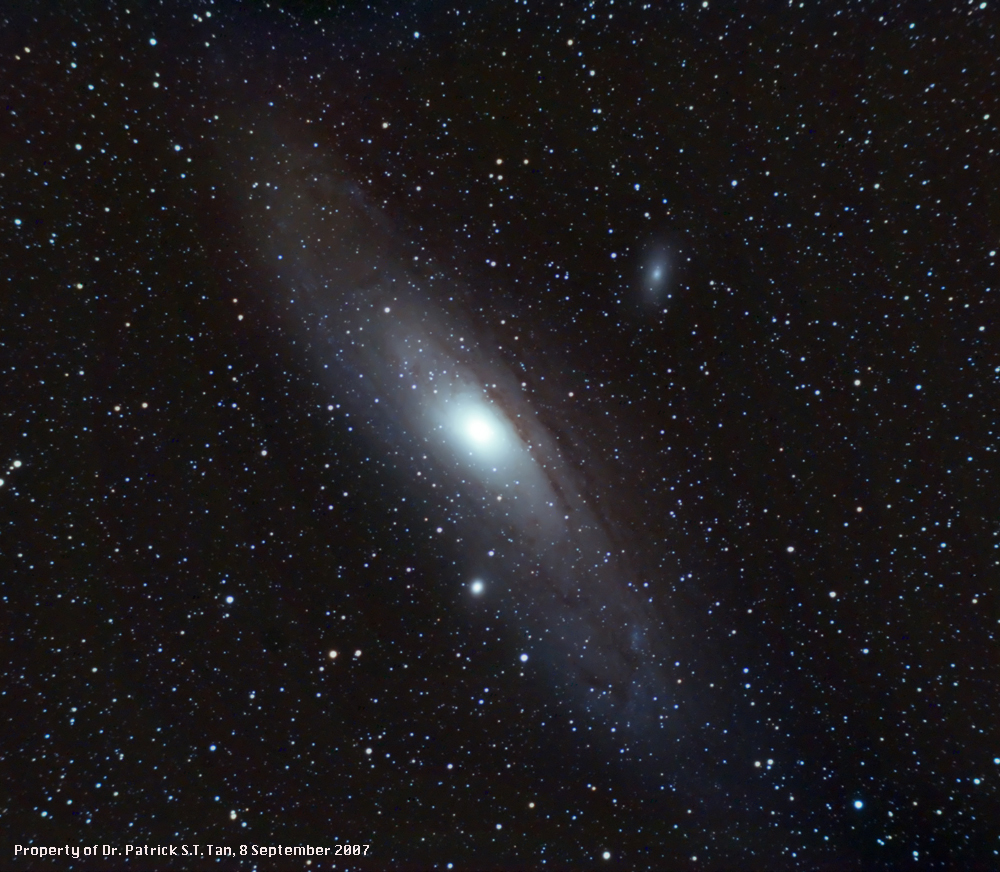
M31 Andromeda Galaxy
M32, NGC205
Date: 08/09/07 Time: 0100hrs Location: Sunningwell Temperature: 15ºC
Camera: Nikon D80 piggyback mounted on LX90 Lens:William Optics ZS66 SD Apo Refractor ISO: 1600 Exposures: 180 seconds x9 F-stop: 5.9 Guidance: Autoguided
This is the first use of my new William Optics apo refractor. Some might ask why one would even bother with such a small aperture (66mm) but I believe the picture speaks for itself. The apochromatic optics are really good value for money, the quality of the scope is quite spectacular given its relatively low expense. I was restricted to this size because of weight limitations - I only have an LX90 which has a smaller motor than the LX200 which I believe would have coped better with the loading. As it was, this configuration strained my Meade SCT and its autoguiding capabilities to the very limit. At near zenith, the scope became very back heavy and I had previously dismantled the ventral rail from which a counterweight could be suspended so I had no way of balancing the asymmetrical load on the motor. I shall try this next time to see if the autoguidance can be improved.
This picture consists of a stack of 9, 3 minutes exposures with the D80. After dark frame subtraction was carried out for each individual light frame, they were stacked and averaged in Photoshop, and the orange/brown light polluted background was subtracted from the master frame using the 'Apply Image' command. The image was then stretched to set dark and light points and the midtones enhanced in the individual RGB channels taking care to preserve the original proportions. Individual corrupt pixel clusters were removed using the clone-stamp tool, taking care not to create or obliterate any stars and one pass of Noise Ninja was carried out, set at 12 for luminance and smoothness and 5 for contrast.
HOME PICTURES: Solar system PICTURES: Wide field